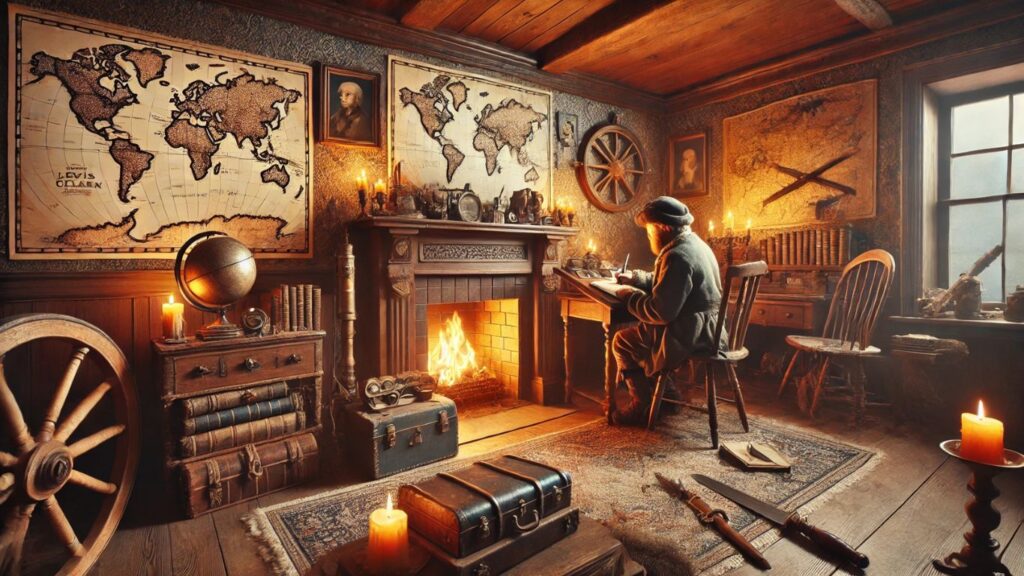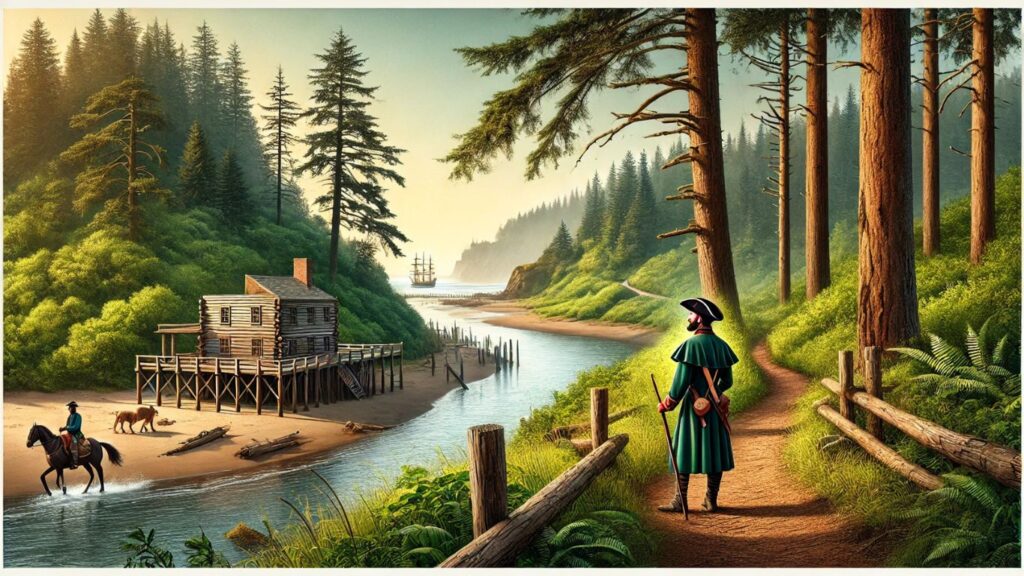Exploring the Lewis and Clark National and State Historical Parks: A Journey Through American History

Introduction
The Lewis and Clark National and State Historical Parks preserve the legacy of one of the most significant explorations in American history. Located across Oregon and Washington, these parks encompass critical sites where the Corps of Discovery, led by Meriwether Lewis and William Clark, made their final push to the Pacific Ocean and spent a harsh winter preparing for their return journey. This article will take you through the history, key locations, and visitor experiences available at these historic sites, offering a detailed and immersive look at the places that shaped America’s westward expansion.
The History of Lewis and Clark’s Expedition

The Mission of Lewis and Clark
Commissioned by President Thomas Jefferson in 1803 following the Louisiana Purchase, the Lewis and Clark Expedition was tasked with mapping the newly acquired western territory, establishing trade with Native American tribes, and finding a water route to the Pacific. The team, known as the Corps of Discovery, set out in 1804 from St. Louis, Missouri, and traveled over 4,000 miles across uncharted lands.
The Journey to the Pacific
In November 1805, after a grueling journey across mountains, rivers, and vast plains, the expedition finally reached the Pacific Ocean. Upon arriving, William Clark famously wrote in his journal, “Ocean in view! O! the joy.” However, their excitement was short-lived as they soon faced extreme winter weather and were forced to establish winter quarters. They built Fort Clatsop, where they remained from December 1805 to March 1806, enduring the elements before embarking on their return journey.
Key Locations in Lewis and Clark National and State Historical Parks
Fort Clatsop (Oregon)
Fort Clatsop is the primary site of the Lewis and Clark National Historical Park. This reconstructed fort provides a glimpse into the difficult winter the Corps of Discovery faced. Visitors can explore:
Replica of the Fort
Built to match the original structure, this fort gives insight into how the team lived and worked.
Living History Programs
Rangers and reenactors bring history to life by demonstrating period tools, weapons, and daily tasks.
Fort to Sea Trail
This scenic trail allows visitors to retrace the expedition’s steps from Fort Clatsop to the Pacific Ocean.
Cape Disappointment State Park (Washington)

Cape Disappointment, despite its name, was an essential stop for Lewis and Clark as they mapped the Pacific coastline. Highlights include:
Lewis and Clark Interpretive Center
Featuring exhibits, artifacts, and interactive displays about the expedition.
Breathtaking Coastal Views
Overlooking the Pacific, the site provides stunning landscapes and dramatic cliffs.
Lighthouse and Hiking Trails
Cape Disappointment Lighthouse stands as a historic beacon, and hiking trails lead visitors through scenic coastal landscapes.
Station Camp (Washington)
This site marks where the expedition made crucial decisions about their winter encampment and conducted trade with Native American tribes. The site offers:
Interpretive Exhibits
Showcasing the cultural exchanges between the Corps of Discovery and local Chinook tribes.
Hiking and Birdwatching
A natural haven for outdoor enthusiasts.
Netul Landing and the Lewis and Clark River (Oregon)
Netul Landing, a lesser-known but historically significant stop, was an important waterway for the expedition. Visitors can:
Kayak and Canoe Along the River
Experience the waters that played a vital role in the journey.
Interpretive Trails
Walk along pathways that showcase the expedition’s challenges.
The Role of Native American Tribes
Throughout their journey, Native American tribes played a crucial role in the expedition’s survival. The Chinook, Clatsop, and Nehalem tribes provided food, guidance, and trade opportunities. Their knowledge of the land helped the Corps of Discovery navigate through the challenging Pacific Northwest terrain. Today, these parks acknowledge and honor the contributions of Indigenous peoples through exhibits and educational programs.
Visiting Lewis and Clark National and State Historical Parks

Park Details
- Locations: Various sites across Astoria, Oregon, and southwestern Washington.
- Hours: Most visitor centers are open year-round, but some trails and facilities may have seasonal closures.
- Entrance Fees: Vary by site; Fort Clatsop typically charges a small admission fee.
- Best Time to Visit: Spring and summer offer the best weather conditions for exploring outdoor sites.
Activities for Visitors
Guided Tours
Learn from knowledgeable park rangers.
Camping and Hiking
Enjoy scenic landscapes and historical trails.
Wildlife Viewing
Spot local species, including elk, bald eagles, and sea lions.
Educational Programs
Engage with exhibits, lectures, and reenactments.
Frequently Asked Questions (FAQ)
What is the significance of Lewis and Clark National and State Historical Parks?
These parks preserve key sites from the Lewis and Clark Expedition, showcasing their journey, interactions with Native American tribes, and historical contributions.
How long did Lewis and Clark stay at Fort Clatsop?
The Corps of Discovery stayed at Fort Clatsop for approximately three months, from December 1805 to March 1806, before beginning their return trip.
Are there guided tours available at the parks?
Yes, visitors can participate in ranger-led tours, historical reenactments, and interactive exhibits to learn more about the expedition.
What are the best hiking trails in the parks?
Some popular trails include the Fort to Sea Trail, Cape Disappointment Trails, and the Netul River Trail, offering breathtaking views and historical landmarks.
Is camping allowed in the parks?
Yes, several designated areas near the parks allow camping, including Cape Disappointment State Park and nearby campgrounds.
Conclusion
The Lewis and Clark National and State Historical Parks offer an incredible journey through time, providing visitors with a deeper understanding of early American exploration and its lasting impact. Whether you are a history buff, nature enthusiast, or simply looking for a unique adventure, these parks present a fascinating glimpse into the trials and triumphs of the Corps of Discovery. By preserving these sites, we honor the legacy of Lewis, Clark, and the Native American communities that shaped America’s frontier history. Plan your visit today and experience the adventure firsthand!
CLICK FOR MORE INFORMATION Dailynewsbizz.com




